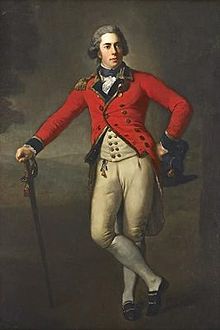Thomas Bruce, 7th Earl of Elgin
| The Earl of Elgin | |
|---|---|

Thomas Bruce, 7th Earl of Elgin and 11th Earl of Kincardine by Anton Graff (around 1788).
|
|
| Born |
20 July 1766 Broomhall, Fife |
| Died | 14 November 1841 (aged 75) Paris, France |
| Title | Earl of Elgin |
| Tenure | 1771–1841 |
| Known for | Removal of Marble Sculptures from Parthenon |
| Nationality | British |
| Spouse(s) | Mary Nisbet (m. 1799) Elizabeth Oswald (m. 1810) |
Thomas Bruce, 7th Earl of Elgin and 11th Earl of Kincardine (/ˈɛlɡɪn/; 20 July 1766 – 14 November 1841) was a Scottish nobleman and diplomat, known primarily for the removal of marble sculptures (also known as the Elgin Marbles) from the Parthenon in Athens.
Elgin was born in Broomhall, Fife, the second son of Charles Bruce, 5th Earl of Elgin and his wife Martha Whyte. He succeeded his older brother William Robert, the 6th Earl, in 1771 while he was only five. He entered the army as an ensign in the 3rd Guards. He was elected as a Scottish Representative Peer in 1790, remaining one until 1807.
In 1791, he was sent as a temporary envoy-extraordinary to Austria, while Sir Robert Keith was ill. He was then sent as envoy-extraordinary in Brussels until the conquest of the Austrian Netherlands by France. After spending time in Britain, he was sent as envoy-extraordinary to Prussia in 1795. Elgin was appointed as ambassador to The Porte in December 1798.
On 11 March 1799, shortly before setting off to serve as ambassador at Constantinople, Elgin married Mary, daughter and heiress of William Hamilton Nisbet, of Dirleton; Elgin finally arrived at Constantinople on 6 November 1799.
...
Wikipedia
